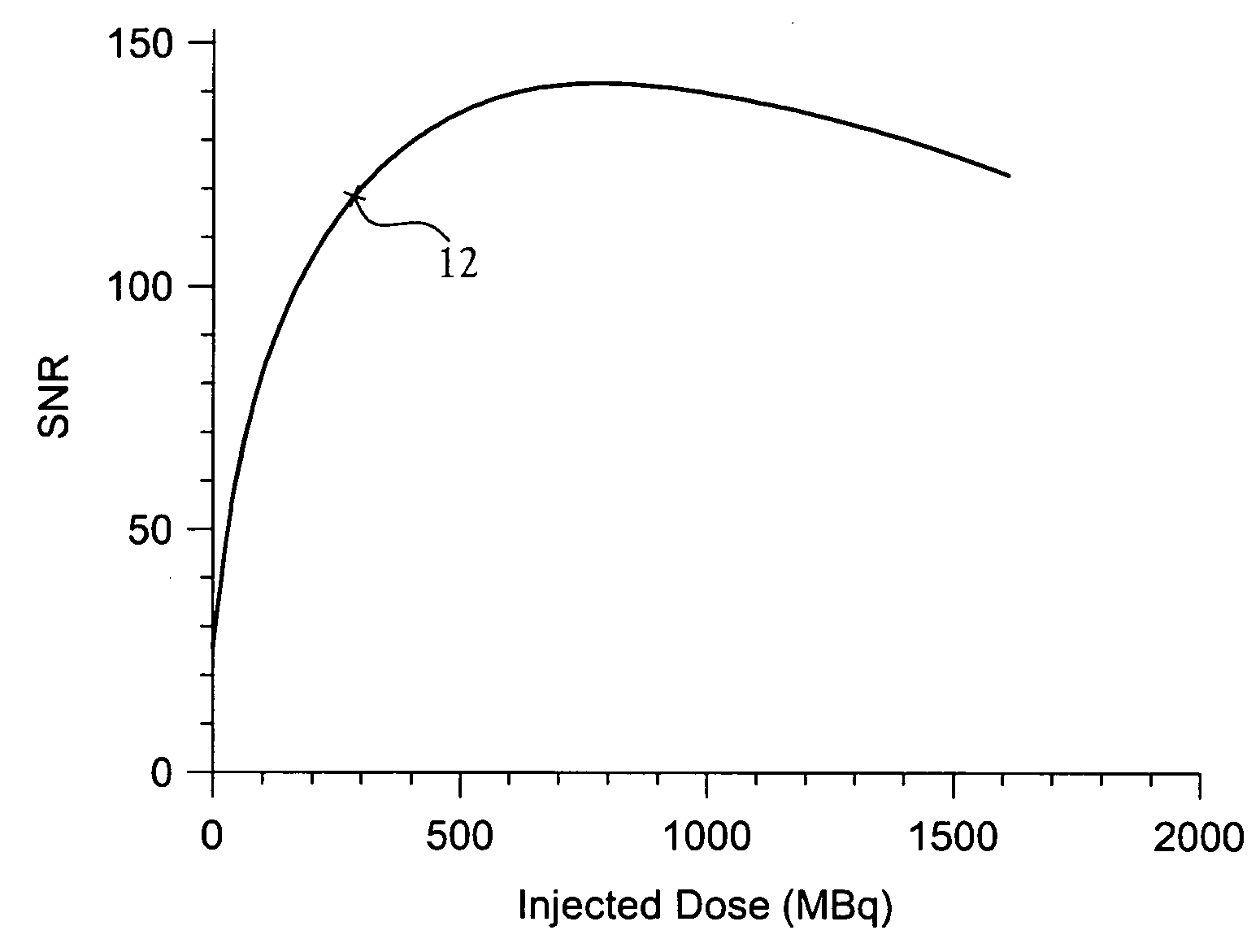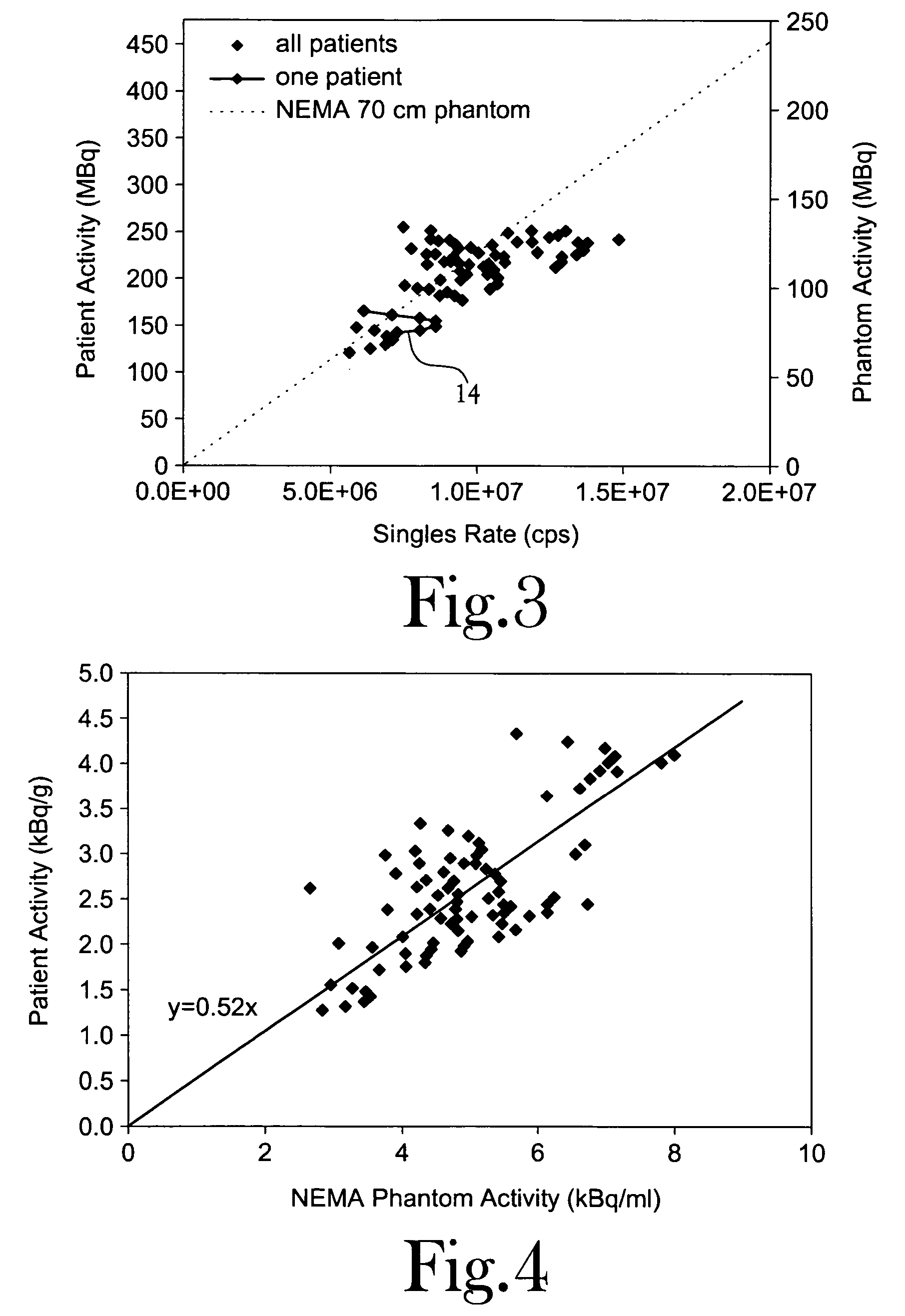Method for improving clinical data quality in positron emission tomography
a positron emission tomography and clinical data technology, applied in the field of positron emission tomography, can solve the problems of difficult to fit these models directly to patients, difficult to estimate necr on patient data, and not necessarily direct, and achieve the effect of improving clinical data quality, reducing the number of patients, and accurately and efficiently determining the signal-to-noise ratio of data
- Summary
- Abstract
- Description
- Claims
- Application Information
AI Technical Summary
Benefits of technology
Problems solved by technology
Method used
Image
Examples
Embodiment Construction
[0056] A method for improving clinical data quality in Positron Emission Tomography (PET) is disclosed. In the method of the present invention, data is processed to accurately and efficiently determine a data signal-to-noise ratio (SNR) corresponding to each individual clinical patient scan, as a function of a singles rate in a PET scanner. The method of the present invention relates an injected dose Dinj to the singles rate to determine SNR(Dinj). The method of the present invention further provides an accurate estimate of a quantity proportional to SNR, the estimate being similar in function to the SNR(Dinj), but being simpler to compute. The method of the present invention has several applications for assessment and optimization of clinical PET data quality.
[0057] The single photon event rate in a detector channel depends on several factors. Among these are the activity α in the patient, the solid angle of the detector for the emitted radiation, the attenuation of the radiation ...
PUM
 Login to View More
Login to View More Abstract
Description
Claims
Application Information
 Login to View More
Login to View More - R&D
- Intellectual Property
- Life Sciences
- Materials
- Tech Scout
- Unparalleled Data Quality
- Higher Quality Content
- 60% Fewer Hallucinations
Browse by: Latest US Patents, China's latest patents, Technical Efficacy Thesaurus, Application Domain, Technology Topic, Popular Technical Reports.
© 2025 PatSnap. All rights reserved.Legal|Privacy policy|Modern Slavery Act Transparency Statement|Sitemap|About US| Contact US: help@patsnap.com



